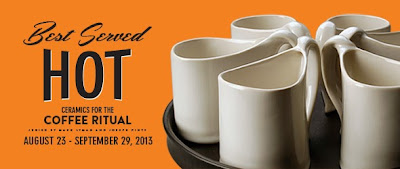1. What is your name (I may not always be able to tell by your email)?
My name is Amber Weatherford
(Editor -- Amber is also known as Amber Celadon :) )
2. When did you start coming to Lillstreet?
I took Gary's Beginning/Beginning Advanced class for four weeks in June 2010.
3. What brought/brings you to Lillstreet?
I came to Lillstreet to take textile classes because I wanted to go to graduate school for textile design and hopefully one day work for Patagonia. I remembered I loved ceramics in college and kind of got stuck on the first floor. he he
4. What is the nature of your clay work -- functional or sculptural?
My work is mostly functional but every now and then I like to make something for myself. Pelagic subject matter, big boats or whales usually.
5. What is your process? Do you sketch, prototype and conceptualize? etc.
I have sketched, but normally I conceptualize.
6. What or who influence your work?
I tend to just think of things that I would like to have and would use. I also like to look at other peoples work in the studio, gallery or internet. I hope to try new things in the future.
7. Do you work with other medium besides clay?
I work with lots of different mediums but nothing as consistently as clay. I am taking a few classes at Lillstreet outside of the clay department, it's fun to branch out.
8. What are your duties as a monitor?
I fire the kid's work in the electric kilns and I do general cleaning of the kid's rooms and some of the hand-building rooms.
9. If there’s one thing you absolutely have to inform the Lillstreet clay community that would make your work easier, what would it be?
One thing?, clean up after yourselves but also don't throw liquid away in the trash cans . . . i.e. half full soda cans or water bottles . . they leak garbage juice its gross.














